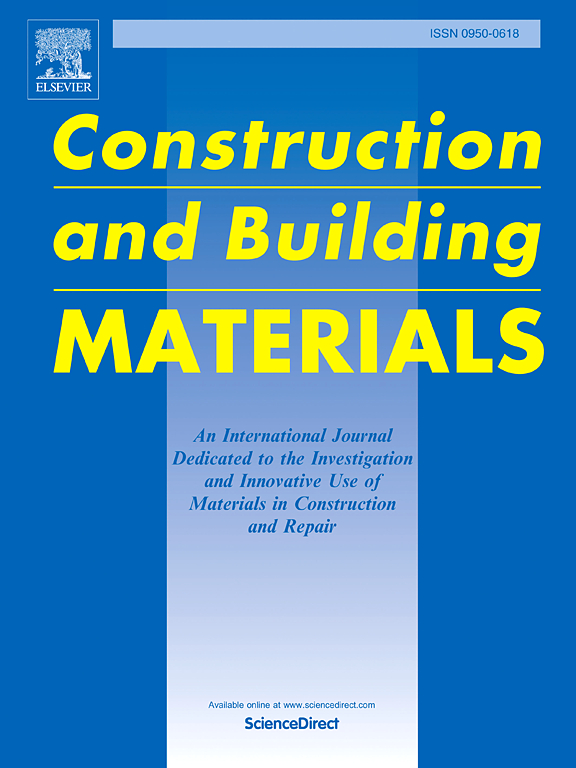3D mesomechanical study on the stress failure mechanism of concrete - Taking uniaxial compression as an example
IF 7.4
1区 工程技术
Q1 CONSTRUCTION & BUILDING TECHNOLOGY
引用次数: 0
Abstract
The Basic magnesium sulfate cement concrete (BMSCC) exhibits superior performance advantages over Ordinary portland cement concrete (OPC). This study investigates the quasi-static mechanical properties and mesoscopic damage mechanisms of BMSCC40 and OPC40 through a combination of experimental testing and mesoscopic simulation. The results show that BMSCC possesses higher strength and toughness: its uniaxial compressive strength and peak secant modulus increase by approximately 21 % and 14.4 % compared to OPC. The toughness indices I5 and I10 are enhanced by 9.4 % and 6.16 %. Additionally, the elastic stage in the ascending segment of the normalized stress-strain curve is longer, and the descending segment is more gradual for BMSCC. Mesoscopic analysis of the damage mechanisms using a three-dimensional random aggregate model reveals that cracks in OPC exhibit significant branching, forming secondary cracks and a spatial crack network. When encountering aggregates, the cracks primarily bypass them. In contrast, cracks in BMSCC tend to propagate independently, penetrating through the aggregates and resulting in a smaller overall lateral strain of the specimen.
求助全文
约1分钟内获得全文
求助全文
来源期刊

Construction and Building Materials
工程技术-材料科学:综合
CiteScore
13.80
自引率
21.60%
发文量
3632
审稿时长
82 days
期刊介绍:
Construction and Building Materials offers an international platform for sharing innovative and original research and development in the realm of construction and building materials, along with their practical applications in new projects and repair practices. The journal publishes a diverse array of pioneering research and application papers, detailing laboratory investigations and, to a limited extent, numerical analyses or reports on full-scale projects. Multi-part papers are discouraged.
Additionally, Construction and Building Materials features comprehensive case studies and insightful review articles that contribute to new insights in the field. Our focus is on papers related to construction materials, excluding those on structural engineering, geotechnics, and unbound highway layers. Covered materials and technologies encompass cement, concrete reinforcement, bricks and mortars, additives, corrosion technology, ceramics, timber, steel, polymers, glass fibers, recycled materials, bamboo, rammed earth, non-conventional building materials, bituminous materials, and applications in railway materials.
 求助内容:
求助内容: 应助结果提醒方式:
应助结果提醒方式:


